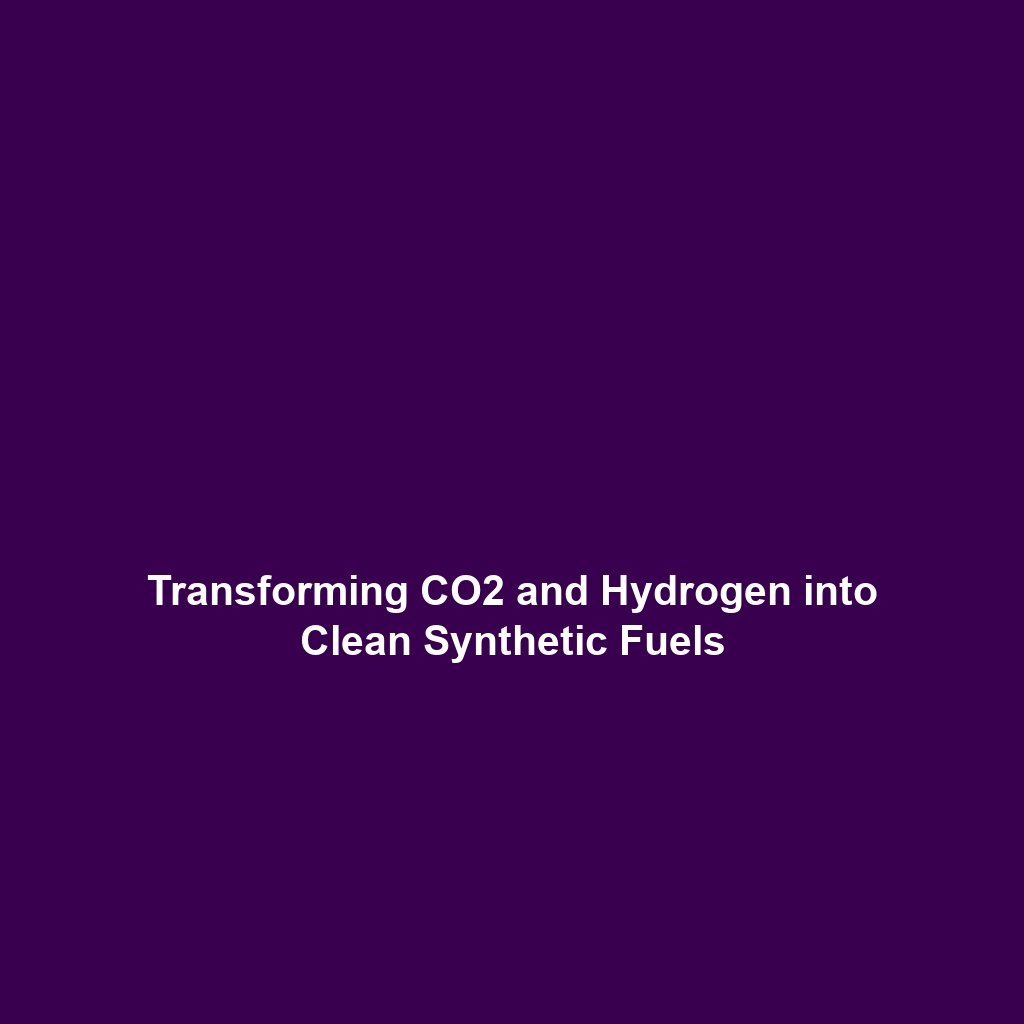CO2 and Hydrogen: A Pathway to Sustainable Synthetic Fuels
Introduction
The combination of CO2 and hydrogen has emerged as a pivotal process in the production of synthetic fuels, such as synthetic methane and methanol, which serve as viable clean energy sources. This innovation is integral to the broader framework of Carbon Capture & Storage (CCS), aiming to mitigate climate change impacts while securing sustainable energy solutions. By transforming greenhouse gases into useful hydrocarbons, this approach not only addresses the urgent need for decarbonization but also enhances energy security globally.
Key Concepts
Understanding Synthetic Fuels
Synthetic fuels are hydrocarbons produced from non-petroleum sources, using technologies that involve carbon dioxide and hydrogen. The essential steps in this process include:
- Carbon Capture: Efficiently capturing CO2 emissions from industrial sources or directly from the atmosphere.
- Hydrogen Production: Generating hydrogen, usually through renewable methods such as electrolysis using solar or wind energy.
- Synthesis Reaction: Combining captured CO2 with hydrogen in processes like the Sabatiers process to create methane or the modified Fischer-Tropsch method to produce methanol.
This synthesis fits within the context of Carbon Capture & Storage (CCS) by closing the carbon cycle, thus offering a method to reduce the overall carbon footprint.
Applications and Real-World Uses
The synthesis of fuels from CO2 and hydrogen presents myriad applications that support the sustainable energy transition:
- Energy Storage: Synthetic methane can be stored and used in existing natural gas infrastructure, providing a flexible solution for energy storage.
- Transportation Fuels: Synthetic methanol can serve as a clean alternative for traditional fossil fuels in vehicles and ships.
- Industrial Applications: Both fuels can be utilized as feedstocks in chemical manufacturing, reducing reliance on crude oil.
These applications demonstrate how the conversion of CO2 into synthetic fuels is a crucial part of the Carbon Capture & Storage (CCS) ecosystem.
Current Challenges
Despite its promise, the practice of combining CO2 with hydrogen to create synthetic fuels faces several challenges:
- Economic Viability: High production costs for hydrogen and carbon capture technologies can limit scalability.
- Energy Efficiency: Current processes may not be energy-efficient enough to compete with traditional fuel sources.
- Regulatory Hurdles: Lack of comprehensive policies supporting synthetic fuel development can hamper investment.
Future Research and Innovations
Ongoing research is crucial for addressing current challenges and unlocking the full potential of CO2 and hydrogen in synthetic fuel production:
- Next-Generation Catalysts: Developing more efficient catalysts to enhance reaction rates and reduce energy consumption.
- Advanced Hydrogen Production: Innovations in hydrogen production methods, including using renewable resources, improving cost-effectiveness.
- Integrated Systems: Creating integrated carbon capture and utilization systems to streamline CO2 conversion processes.
The advancement of these technologies is vital for the future of Carbon Capture & Storage (CCS) and achieving global climate goals.
Conclusion
The combination of CO2 and hydrogen to produce synthetic fuels, including synthetic methane and methanol, stands at the forefront of sustainable energy solutions. As a key mechanism within Carbon Capture & Storage (CCS), this technology not only mitigates carbon emissions but also lays the groundwork for a cleaner energy future. Continued investment and research will be essential for overcoming existing challenges and realizing this potential. Discover further information on Carbon Capture Technologies and the role of Renewable Energy Sources in sustainable practices.

Leave a Reply